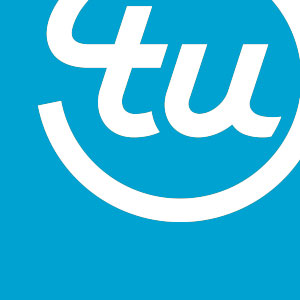The Marvel Guide to Becoming a Billion-Dollar Superhero
What’s more impressive than making a billion dollars? How about doing it in less than a week?
That’s right, just when you thought Marvel couldn’t outdo themselves, Avengers: Endgame became the first film ever to cross the $1-billion profit mark in its opening weekend. Talk about the ultimate superhero success story.
It wasn’t always like this. Before Iron Man put on his suit, before Captain America took the super serum and before Thor swung his hammer, Marvel’s biggest cinematic achievement consisted of, well, a movie about a duck.
The global domination of Marvel is even more impressive when you think about where the brand was barely two decades ago. In 1996, Marvel filed for bankruptcy after comic book sales collapsed. To keep afloat, they sold off the movie rights to many of their most popular superheroes - Spiderman, X-Men, the Hulk and the Fantastic Four. While it pulled them out of debt, the returns weren’t exactly great.
The odds were stacked against them, but in true superhero style, Marvel made a decision that would change their fate forever. They started an in-house film studio. What happened next is as inspirational as any comic book.
Every Superhero Needs a Comeback
The reason we love superheroes isn’t that they’re all powerful - it’s that they’re resilient enough to come back from the brink of defeat and use their experience to lead them to victory. That’s exactly what Marvel were able to do, learning from their business mistakes and adjusting their strategy.
One of the reasons audiences rejected Marvel in the 90s was the perception that they had abandoned good stories to push overpriced comic books with holographic covers. The brand took this hard-learned lesson and used it to shape a new vision. At the same time, they drew from their long history of characters and stories, reaching out to fans to understand why they had fallen in love with Marvel comics in the first place.
What they found laid the foundation for the franchise - relatable characters whose problems didn’t disappear because they had superpowers, an interconnected universe where the actions of one story affected others, and a good dose of humour.
Marvel had their roadmap. Story over star power. Character over special effects. Product over gimmicks. Long-term thinking over short-term gains. We can see this in the first few movies, which featured indie directors and lesser known actors - did anyone know their Chris from their other Chris before they became Captain America or Thor?
Every Superhero Needs a Universe
When Marvel first drafted what would eventually become the Marvel Cinematic Universe (MCU), they built a massive database containing information about storylines, characters, relationships and other important details. Using that data, Marvel were able to create a visualisation where their many heroes (those that they still owned the rights to, at least) had the best connections to other heroes and popular storylines.
Did you think they picked Iron Man just because they liked his suit?
Marvel then used this data to plot out a storytelling strategy that stretched 20 years into the future. Each movie introduced more of the connections and planted more of the narrative seeds that would grow into this immersive universe that fans fell in love with. In between the movies came other kinds of media - short films, behind-the-scenes content, video games, TV shows and the comics themselves - all designed to invest fans in this interconnecting universe.
Every Superhero Needs a Plan
We may think of super-strength and flight when we think of superheroes, but the Marvel universe is filled with super-scientists. Iron Man, Spiderman, Dr Strange, Bruce Banner, Black Panther - the list goes on of heroes whose brains help them win the day.
Marvel themselves are the same: a powerhouse built on intelligence and smart decision-making. To achieve their ambitious vision, they built their own version of Iron Man’s JARVIS, a massive data-gathering operation that gave them the insights needed to make the right decisions.
Take Marvel Insider, a loyalty programme that rewards fans with prizes and exclusive gifts for engaging with content. It’s just one of the ways the brand knows what their audiences want and don’t want. Or the exhaustive audience analytics that take place after each fan event - insights from last year’s San Diego Comic Con, for instance, led to a completely new distribution strategy for Marvel’s live streams that resulted in a 400% increase over the previous year.
Ultimately, it’s the decision to get back to what they are good at - story, character and making audiences care - that allowed Marvel to create this incredible data-powered marketing ecosystem. Without the work they did to regain their lapsed fans’ trust and convince new audiences why they should care, the Marvel universe as we know it would never exist.
That’s their story - now, whats yours? What does your end game look like? And how are you going to make your customers believe in it?
Contact Us
We're sorry, your request failed. Please try again in a little while.
This site is protected by reCAPTCHA and the Google Privacy Policy and Terms of Service apply.



